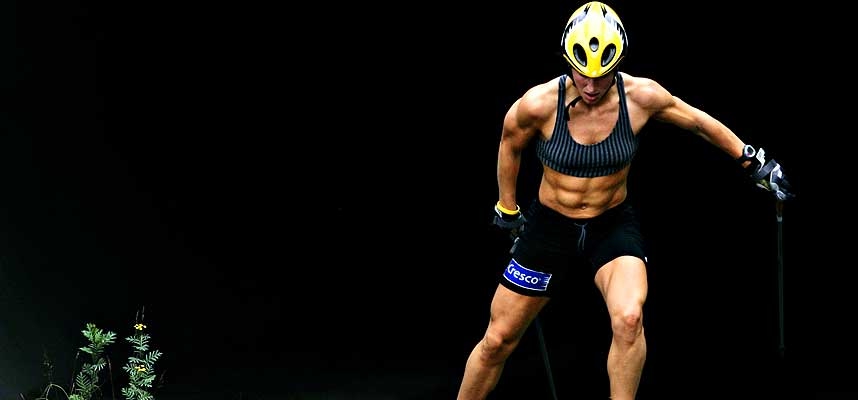If you’re like me, then you spend the majority of your summer running, hiking or riding your bike. While these activities leave me in great aerobic shape come fall, my arms are typically the size of toothpicks, which just isn’t great for nordic skiing. While success in Nordic skiing is largely the result of aerobic capacity, it does require a certain amount of upper body strength. This is very evident when comparing the silhouettes of elite runners and elite nordic skiers, the nordic skiers usually look like they could tear the runners in half.
I find that doing a little bit of strength training in the fall helps tremendously come ski season.
While there are plenty of complicated lifting programs out there, the reality is that it only takes some sets of few compound exercises to get stronger (we’re not bodybuilding here). Try following the program below, but remember to ease into it if you haven’t been lifting. If you are just starting out and don’t keep the weight light for the first week or two you pay for it dearly the following day.
First, warm-up for 5 – 10 minutes, using easy weights, stationary bike or running. Before starting each of the individual exercises do 10 – 12 repetitions with easy weight. This may not be required after you’ve warmed up well, or after a few exercises.
To improve in strength, you need to “stress” yourself and lift hard. There is no use in lifting half-heartedly. The two last repetitions on each set should be hard to complete, especially on the last set.
Every exercise: First warm-up with 10 – 12 easy reps – then do three sets of 6 – 8 reps. If you can do 9 reps x 2 sets you need to add some weight, rather than adding number of reps.
Combine two and two exercises (i.e. do pairs as in a superset, then take a longer break before the next pair). Be efficient and use/train the big muscle groups. You will not gain size (hypertrophy) from this type of training, you’ll just get stronger.
Upper body
1. Bench press (put legs on the bench, not on the floor) & Pull-down
2. Rowing /arm-pull while sitting & Arm-press with dumbbells using incline bench
3. Pull Ups (use lat machine if can’t complete pull ups)
4. Dumbell Raises – Grab a light dumbbell (think 5-10 pounds), squeeze your shoulder blades together and lift. The focus is on activating the lower trapezius and rhomboids, not the typically overdeveloped upper trapezius
5. Back and stomach
Back: Use incline bench with feet or legs fastened. Lay on stomach with upper body hinged outside bench. Raise your back with straight back and use dumbbells or weight plates as load.
Stomach: “Pump”(as you’ve see boxers do) or crunch stomach until fatigue. Stomach is the only exercise with many reps. Can also use weight plates as extra load.
Planks: Focus on good form, start by holding for 30 seconds and work your way up as you get stronger.
6. Legs: Squats & hamstring curl (can do 10 – 12 reps with both of these) Focus on good form and glute activation, not on how much weight you can move.
7. Finish off the session with 2 x triceps-dips to fatigue
Complete this session twice a week. If you feel you need to do more strength, a third weekly session should be done with slightly reduced weights; same number of sets, but with 10 – 12 reps. Don’t go “all out” on this session, but the two last reps in each set should still be hard. You can also skip the leg exercise this day, since they normally get more use than the upper body through other training activities.

